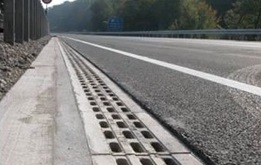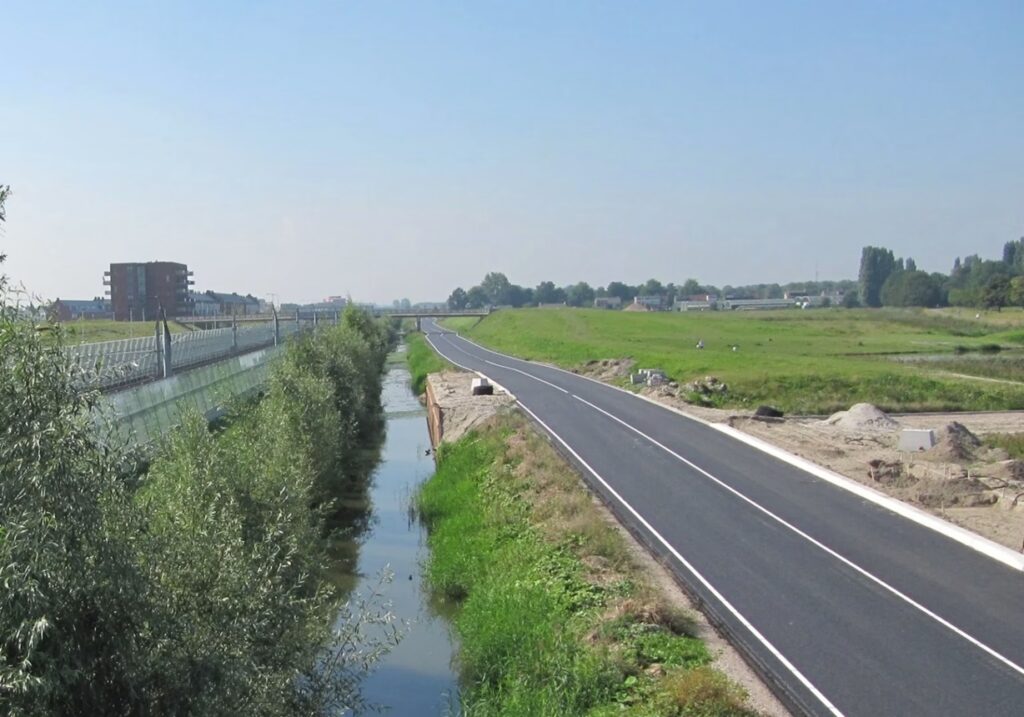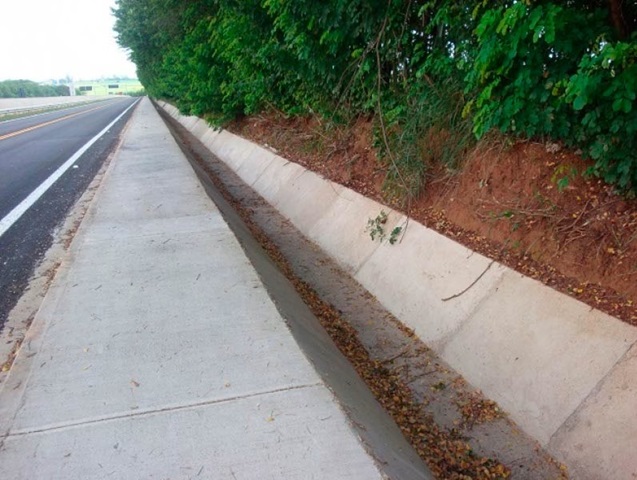Sustainable Drainage Systems (SuDS) are designed to manage surface water runoff on highways in an environmentally controlled way. These systems allow water to be absorbed, stored and released gradually. SuDS reduce the risk of flooding by minimizing excessive runoff, improve water quality by filtering pollutants, and enhance groundwater recharge. By integrating SuDS into highway infrastructure, the design ensures effective rainwater management while preserving the natural hydrological balance of the area.
Sustainable Drainage Systems (SuDS) is composed of range of materials, including:
- Permeable surfaces: Porous asphalt, interlocking pavers
- Aggregates: Gravel for water infiltration
- Geotextiles: Prevent clogging
- Vegetative elements: Grass, shrubs for filtration
- Modular plastic units: For water storage
- Structural materials: Concrete, steel for stability in components like silt traps and attenuation tanks
Application Areas of Sustainable Drainage Systems (SuDS) for Highways
- Urban Highways: Manages stormwater in densely populated areas to prevent localized flooding.
- Rural Highways: Enhances groundwater recharge and reduces erosion in agricultural or undeveloped regions.
- Intersections and Junctions: Addresses high runoff volumes at these traffic-intensive areas.
- Highway Service Areas: Manages runoff from parking lots, fueling stations, and service facilities.
- Bridges and Overpasses: Prevents water accumulation and structural damage in elevated structures.
- Toll Plazas: Controls surface water flow in paved areas with minimal vegetation.
- Expressways and Motorways: Ensures efficient drainage in long stretches of high-speed roads.
- Industrial Corridors: Handles contaminated runoff near industrial zones adjacent to highways.
- Airport Access Roads: Manages runoff from roads leading to airport facilities.
- Coastal Highways: Protects against erosion and saltwater intrusion in areas near shorelines.
- Mountainous Highways: Reduces risks of landslides and manages water flow on steep terrains.
- Highway Rest Stops: Ensures proper drainage in areas with frequent vehicle stops and pedestrian activity.

Factors to Consider for Using Sustainable Drainage Systems (SuDS) for Highways
- Assess the slope, elevation, and natural drainage patterns of the highway site.
- Determine soil permeability to decide the suitability of infiltration-based systems.
- Account for rainfall patterns, intensity, and seasonal variations.
- Evaluate the land availability for installing SuDS components without disrupting road design.
- Estimate stormwater quantity and pollutants to design appropriate treatment systems.
- Consider the impact of heavy vehicles on SuDS elements and their durability.
- Assess long-term maintenance needs and costs for SuDS components.
- Account for nearby water bodies, ecosystems, and protected zones.
- Evaluate the feasibility of incorporating SuDS into existing drainage infrastructure.
- Analyze groundwater levels and flow patterns to prevent waterlogging.
- Adapt SuDS designs to suit urban, suburban, or rural highway environments.
- Consider flood vulnerability to design systems that mitigate high-risk scenarios.
Key components of Sustainable Drainage Systems (SuDS) include:
- Permeable Pavements: Specially designed road surfaces that allow rainwater to infiltrate, reducing runoff and helping to recharge groundwater.
- Swales: Shallow, vegetated ditches along highways that slow down and filter runoff, helping to prevent flooding and water pollution.
- Retention Ponds: Designed to temporarily store excess rainwater from highway surfaces, preventing fast runoff and flooding by slowly releasing the water.
- Infiltration Basins: Depressions along highways that capture runoff and allow it to soak into the ground, reducing the burden on drainage systems.
- Filter Strips: Grassed or vegetated areas along roadsides that capture and filter surface runoff, preventing contaminants from entering water systems.
- Vegetated Bunds: Earth mounds with vegetation used to redirect and manage surface water flow, promoting infiltration and reducing erosion.
- Grass Channels: Vegetated channels alongside highways that convey and treat stormwater, encouraging infiltration and reducing surface runoff.

Advantages of Sustainable Drainage Systems (SuDS) for highways:
- Reduces surface water runoff, decreasing the likelihood of flooding on highways and adjacent areas.
- Prevents waterlogging and protects infrastructure from water damage.
- Lowers the strain on conventional drainage systems, reducing maintenance and operational costs.
- Minimizes the chances of drainage system failures like blockages and overflows.
- Smooth groundwater recharge by allowing water to naturally seep into the ground.
- Reduces long-term infrastructure repair and flood damage costs.
- Provides a low-maintenance drainage solution compared to traditional systems.
- Helps mitigate the impact of increasing rainfall volumes and frequencies due to climate change.
- Reduces the transfer of harmful pollutants into watercourses, maintaining ecosystem health.
- Prevents pollutants such as nitrogen and phosphorus from contaminating nearby waterways.
- Provides temporary storage for excess rainfall, reducing the volume and speed of runoff.
- Helps manage floodwaters in a way that protects both roads and surrounding areas.
- Supports sustainable water management by using natural processes to deal with rainwater.
Installation Method for Sustainable Drainage Systems (SuDS) for Highways
- Site Assessment: Conduct survey and select SuDS components.
- Design: Perform hydrological modeling and finalize system design.
- Excavation: Prepare site and excavate for SuDS features.
- Installation: Lay permeable pavements, swales, basins, and infiltration systems.
- Drainage Structures: Connect SuDS to drainage network and install flow controls.
- Testing: Inspect systems and conduct infiltration/flow tests.
- Landscaping: Plant vegetation and restore site.
- Maintenance: Create maintenance schedule and monitor performance.
- Documentation: Maintain records and submit compliance reports.
Conclusion
Sustainable Drainage Systems (SuDS) offer an effective and eco-friendly solution for managing highway runoff. By reducing flooding, improving water quality, and promoting groundwater recharge, SuDS enhance the resilience of highway infrastructure while supporting environmental conservation.


